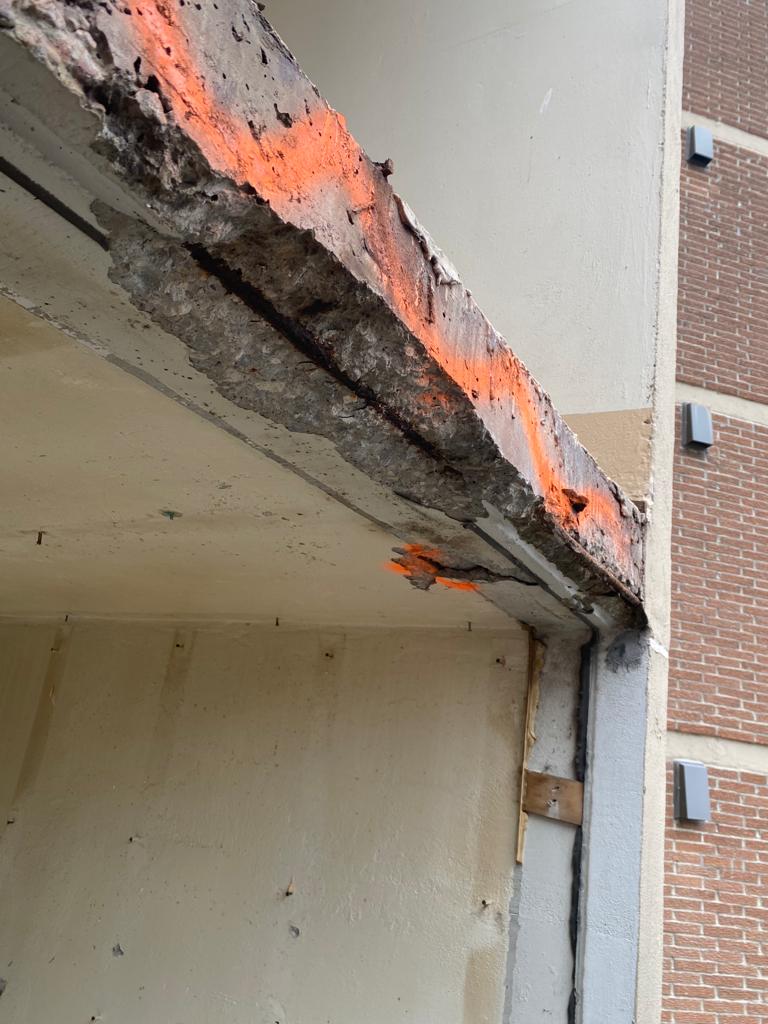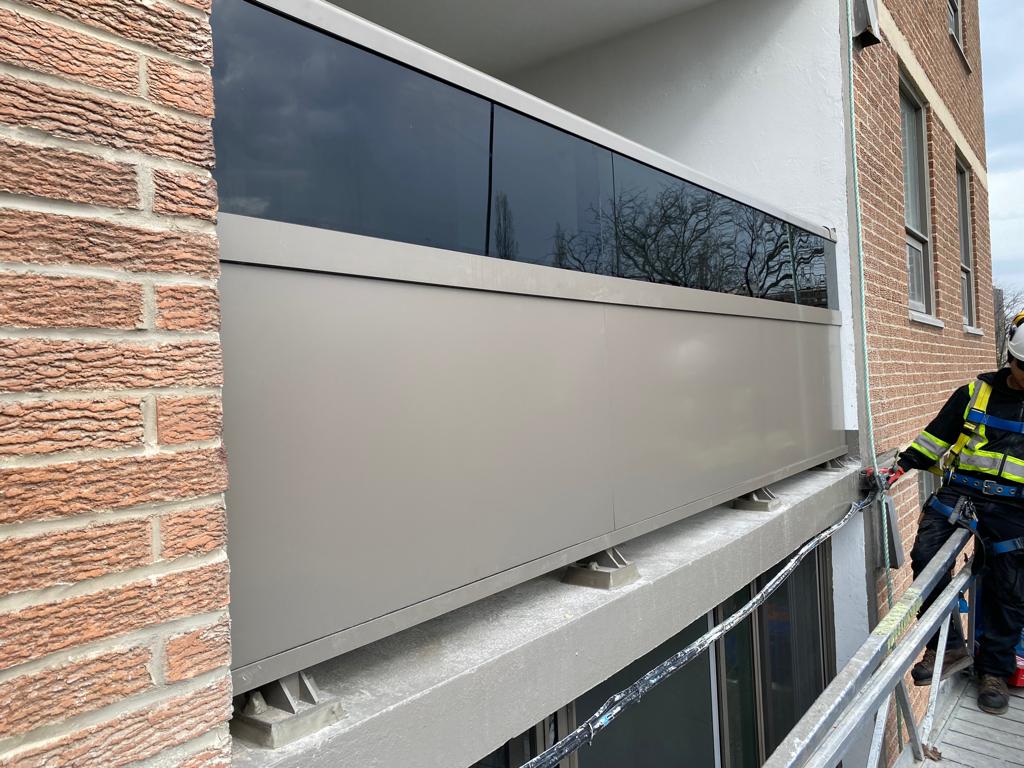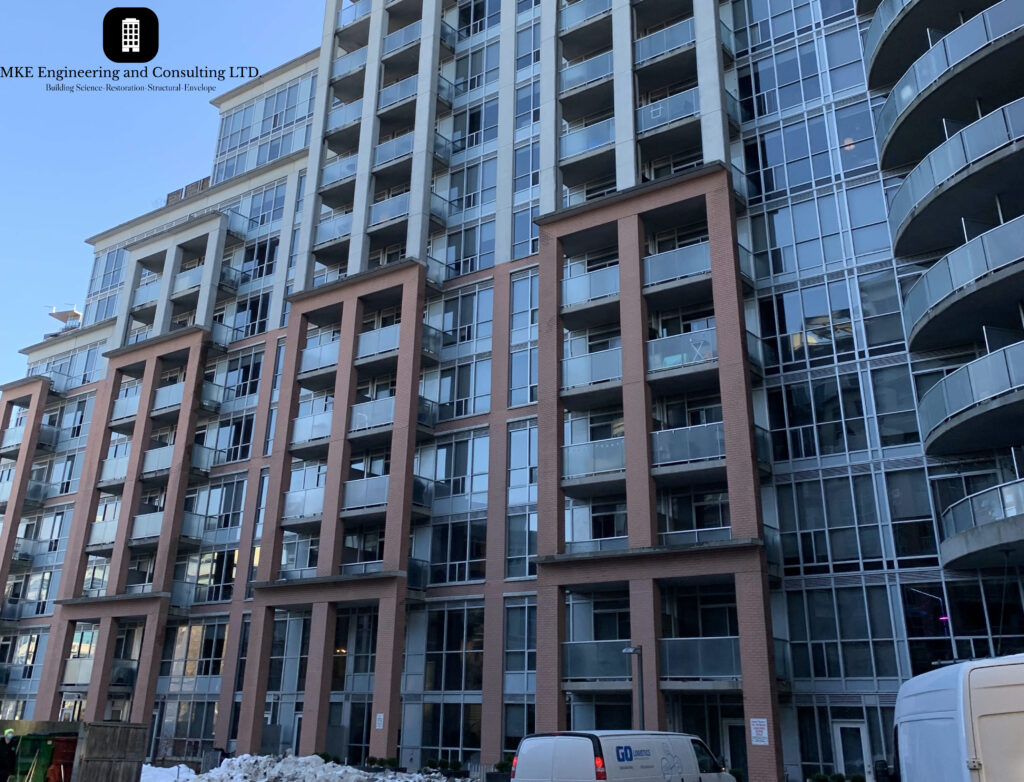Engineering Solutions for You
Our Services

Building Services
We have encountered and solved problems with building structures, waterproofing, Envelopes such as roofing, facades – Drainage issues, suspended slab drainage, building stormwater drainage systems, heated ramps and entrances, underground parking garages restoration and upgrades to meet the accessibility applicable codes.
MKE is a Client-Centric engineering firm that ensures Client satisfaction comes first – Our seasoned engineers and staff are always very responsive, on time, and on budget.
We investigate and assess thoroughly building-related deficiencies, and precisely engineer solutions to restore the existing building to a safe and sound condition from the estimated construction costs to the commissioning and warranty reviews.
Our engineering services include:
-Building Condition Assessment – Investigations – Technical Advocacy – Performance Audits – Restoration – Construction Review and Contract Administration – Building Quality Assurance

Restoration and Structural Engineering
From the assessment and testing phase to completion and preparation of designs, tender documents, building permit application, construction review, contract administration, commissioning, and warranty review.
As a multi-discipline engineering firm, we ensure that Client satisfaction always comes first by regarding the public welfare and safety as paramount.
Regardless of the size of the projects – All Clients and projects are very well taken care of, always on time and as budgeted. – No surprises or additional fees requests.

Reserve Funds Studies:
A properly executed Reserve Fund Study (RFS) is paramount for the long-term financial health and physical integrity of any condominium corporation or strata property. Its primary importance lies in providing a realistic roadmap for the repair and replacement of major common elements, such as roofing, paving, mechanical systems, and exterior finishes, that inevitably fail over time. When done right, the RFS provides an accurate 30-to-50-year projection of the costs associated with these major capital expenditures, the expected useful life of each component, and a tailored funding plan—often in the form of a contribution schedule—to ensure the reserve fund has adequate cash when needed. This meticulous planning is crucial because it helps the board and owners avoid unexpected, large special assessments, which can be financially burdensome and negatively impact property values. Furthermore, a thorough and defensible study demonstrates fiduciary responsibility on the part of the board, builds owner confidence in the management of their shared asset, and ensures compliance with increasingly stringent provincial or state regulations.
The accuracy of the RFS hinges on two critical elements: the physical analysis and the financial analysis. A study “done right” features an on-site inspection by a qualified professional—typically an engineer or certified reserve fund planner—to verify the condition and remaining useful life of assets, rather than relying on outdated or generic data. This leads to a credible component inventory and reliable cost estimates. Financially, the study must use realistic inflation rates for construction and repairs and consider the rate of return on the invested reserve funds, applying advanced funding models to recommend a sustainable and equitable contribution strategy. An inadequate study, based on superficial assumptions or insufficient data, can lead to chronic underfunding, resulting in deferred maintenance, decreased property enjoyment, and the necessity of those severe special assessments. Therefore, a high-quality, professional RFS is not merely a legal obligation; it is the cornerstone of sound asset management and financial stability for the community.
While Reserve Fund Studies (RFS) are essential for long-term capital planning, we’ve observed common pitfalls that can impact condominium corporations: underestimations of project costs, misaligned scheduling, and occasionally, a prioritization that doesn’t address the most immediate structural needs.
At MKE Engineering, we believe in supplementing RFS data with rigorous, independent assessments. Our approach involves a thorough on-site evaluation to determine the actual current needs of your building.
By not solely relying on initial RFS findings, we help condominium boards make more informed decisions, optimize resources, and ensure the longevity and safety of their assets.

Restoration Services:
Restoration is an Art, Not Just a Replacement!
Restoration transcends simple “like-for-like” replacements. It demands a deep understanding of the existing structure and its unique challenges.
Our process begins with a meticulous condition assessment, meticulously evaluating every element in facades, roofing, underground structures, and more.
Now, we’re leveraging the power of advanced drones to pinpoint moisture and thermal leaks with unparalleled accuracy. This data fuels our comprehensive condition assessment reports, complete with precise energy savings calculations.
At MKE Engineering, we’re dedicated to a smart approach for parking garage restoration projects. While reserve fund studies offer guidance, we prioritize current, on-site assessments to tailor every project.
This means we can adjust timelines and budgets to precisely meet your condominium’s actual needs, ensuring all components (foundation walls, subgrade drainage, suspended slabs, toppings, and features) are restored to a safe, sound, and waterproofed state. Our goal is effective, needs-based restoration.
At MKE Engineering, we’re dedicated to a smart approach for parking garage restoration projects. While reserve fund studies offer guidance, we prioritize current, on-site assessments to tailor every project.
This means we can adjust timelines and budgets to precisely meet your condominium’s actual needs, ensuring all components (foundation walls, subgrade drainage, suspended slabs, toppings, and features) are restored to a safe, sound, and waterproofed state. Our goal is effective, needs-based restoration.
Beyond structural repairs for balcony restoration, we prioritize the crucial details that prevent future issues. Proper slopes and drainage are engineered to eliminate water ponding—the root cause of many balcony problems. We also meticulously detail slab edges and integrate waterproofing with a protective soffit reglet. Quality materials, applied as recommended, ensure lasting performance.

At MKE, Engineering Excellence Meets Talent!
Having a customized waterproofing system designed specifically for your property is essential to ensure long-lasting protection against below-grade contaminants that are the number one cause of structural reinforcement corrosion and, in some cases, failure!
Overlapping the fiberglass reinforcing sheets is a “must” to ensure no weak sections in the waterproofing membrane.

MKE has its architect partners, and in-house mechanical and electrical engineering for all various types of restoration projects
Electrical and Mechanical (E&M) restoration projects involve comprehensive upgrades, repairs, and modernization of a building’s core utility infrastructure. These projects are critical for enhancing safety, ensuring regulatory compliance, improving energy efficiency, and extending the service life of the entire property, often moving a building from a state of reactive maintenance to a proactive management strategy. They go beyond simple fixes to address systemic vulnerabilities in aging or damaged systems, such as those following a disaster or simply due to decades of wear and tear.

Certified Thermal Drone Scanning:
At MKE, our certified pilots are experts at operating advanced thermal drones. Using cutting-edge thermal technology, we can precisely pinpoint thermal and moisture leaks, helping you identify and address issues quickly and efficiently.
Precision and Safety in Inspection
Certified Thermal Drone Scanning represents the convergence of three powerful technologies—Unmanned Aerial Systems (UAS), Infrared Thermography (IRT), and professional certification—to provide non-destructive, highly accurate condition monitoring across diverse industries. Certification, typically granted by organizations like the Infrared Training Center (ITC), ensures that the drone pilot or thermographer possesses the necessary theoretical knowledge and practical expertise regarding radiometry, thermal science, equipment calibration, and environmental factors (like solar loading and wind) to capture quantifiable and reliable thermal data. This professional standardization moves the inspection process beyond simple visual hot-spot detection, guaranteeing that the collected data is not only high-resolution but also accurately interpreted into actionable reports, thus minimizing guesswork and providing a legally defensible record of asset condition. This level of precision is paramount for critical applications, ensuring that structural, electrical, or energy anomalies are detected early and repaired efficiently.
The importance and benefits of adopting a certified thermal drone scanning strategy are immediately evident in terms of safety, efficiency, and financial return. Drones eliminate the need for personnel to climb dangerous structures like cell towers, bridges, and large solar arrays, drastically mitigating safety risks and liability exposure, while simultaneously reducing the time required for comprehensive inspections from days to mere hours. For applications like building envelope assessments, thermal scans can swiftly identify hidden issues such as insulation gaps, moisture intrusion, and latent water damage that are invisible to the naked eye, preventing minor issues from escalating into expensive structural failures. In the energy sector, certified thermography pinpoints overheating components in solar panels and electrical substations, allowing for predictive maintenance that maximizes operational uptime and return on investment. The resulting data, often combined with 3D modeling software, delivers an unparalleled level of detail and documentation that accelerates repair cycles, optimizes maintenance spending, and ultimately extends the useful life of major assets.

Electrical Restoration Projects
Electrical restoration focuses on the power distribution, lighting, and safety systems. Common projects are primarily driven by the need to handle modern power loads and mitigate fire hazards.
Service Upgrades and Panel Replacement: This involves replacing outdated, under-capacity, or non-compliant electrical panels and switchgear. Modernization is essential to prevent overloaded circuits, accommodate new technology (like electric vehicle chargers or data centers), and ensure the panel can properly protect against faults.
Wiring and Conduit Replacement: Older buildings often have outdated wiring materials (like aluminum or knob-and-tube) or insufficient insulation. Restoration includes the complete replacement of compromised or obsolete wiring and conduits to meet current electrical codes, significantly reducing the risk of electrical fires and system failures.
Safety and Compliance Modernization: Projects include installing proper grounding and bonding systems, adding surge protection devices at the main panel to safeguard sensitive equipment, and ensuring emergency lighting and backup power systems are fully functional and compliant with safety codes like NFPA (National Fire Protection Association) standards.
Lighting Retrofits: This often involves a wholesale transition from fluorescent or incandescent lighting to modern, high-efficiency LED systems and the integration of smart controls. This restoration effort drastically cuts energy consumption and operating costs while improving light quality.

Mechanical Restoration Projects
Mechanical restoration projects center on the building’s vital Heating, Ventilation, and Air Conditioning (HVAC), plumbing, and fire suppression systems, which are key determinants of occupant comfort and operational health.
HVAC System Overhaul and Replacement: This is often the largest part of a mechanical restoration. It involves replacing aging boilers, chillers, rooftop units (RTUs), and air handling units (AHUs). A “restoration” often moves from constant repair to installing new, high-efficiency systems like Variable Refrigerant Flow (VRF) or high-efficiency heat pumps, which drastically reduce energy use and improve climate control consistency.
Ductwork Cleaning and Restoration: Essential for indoor air quality (IAQ), this includes professional cleaning to remove accumulated dust, mold, and biological contaminants. In some cases, duct sealing or replacement is necessary to eliminate leaks and improve airflow efficiency.
Plumbing System Upgrades: Restoration addresses issues like corroded pipes, low water pressure, and leaks. This may involve repiping the entire building with modern materials like copper or PEX, replacing or rehabilitating water heaters and circulation pumps, and upgrading drainage systems.
Building Automation System (BAS) Integration: Modern mechanical restoration integrates all major systems—HVAC, lighting, and sometimes security—into a BAS or smart thermostat network. This allows for centralized monitoring, automated fault detection, and real-time optimization of energy usage based on occupancy and external conditions, transforming the building into a truly “smart” asset.
